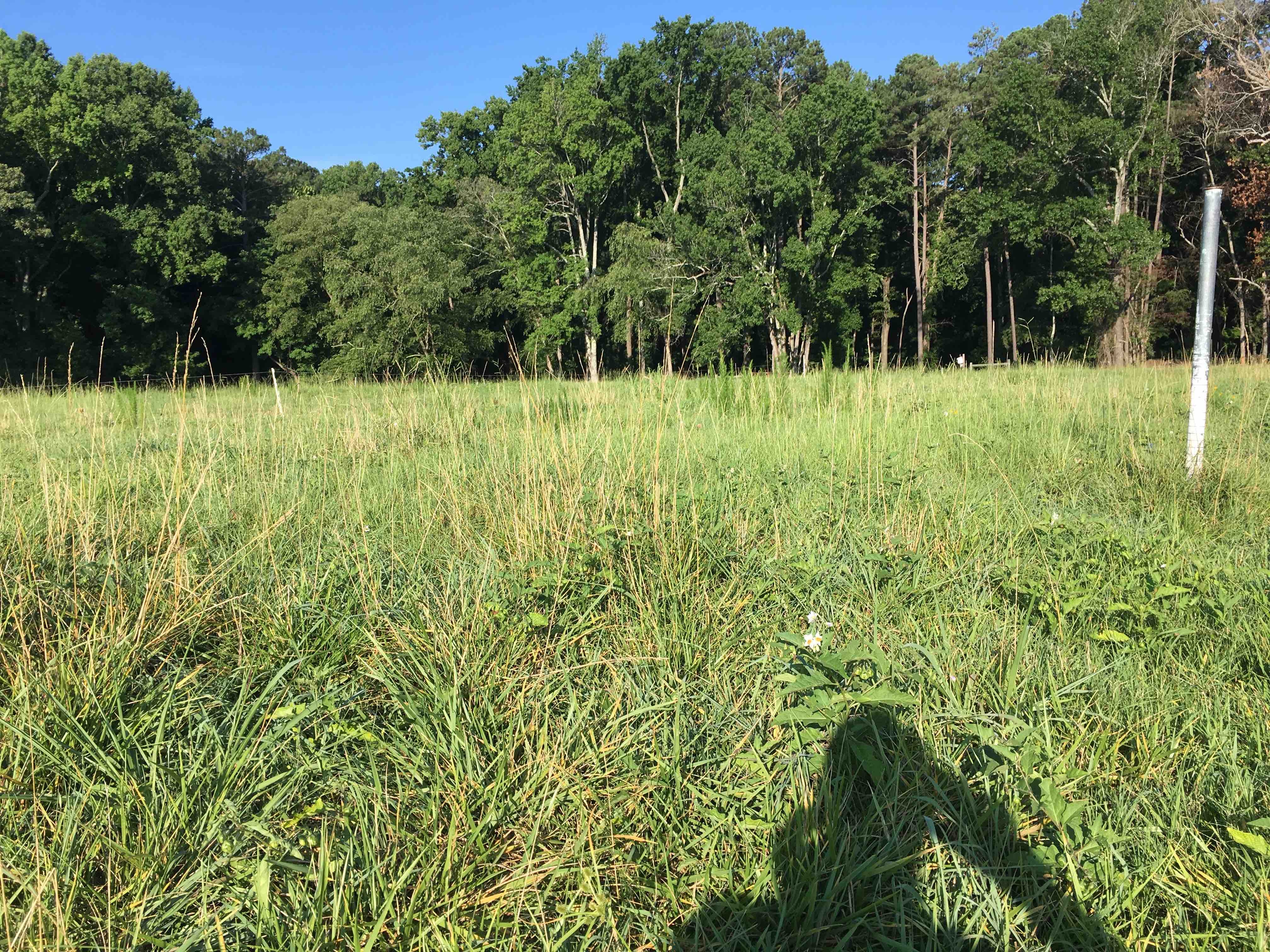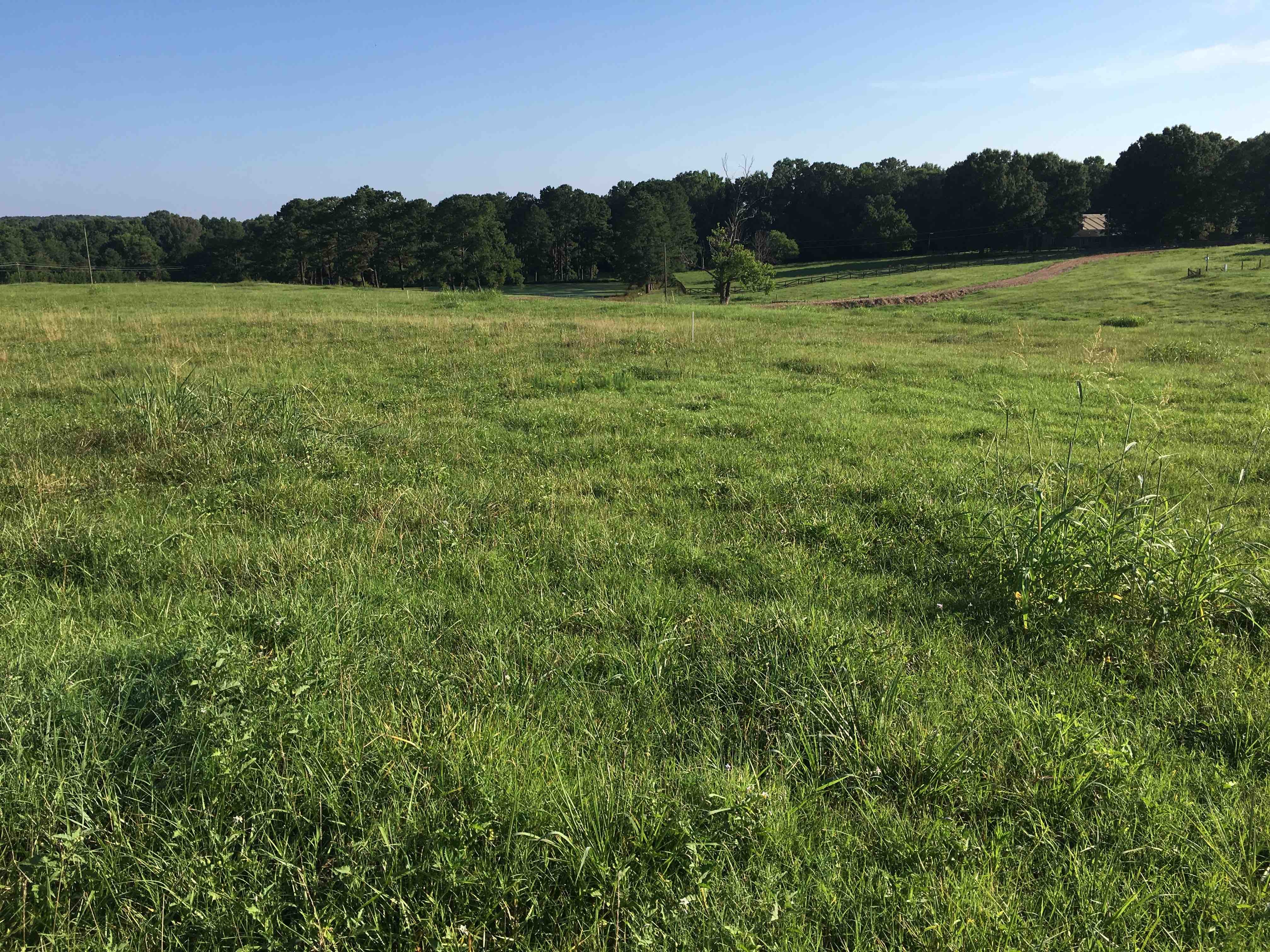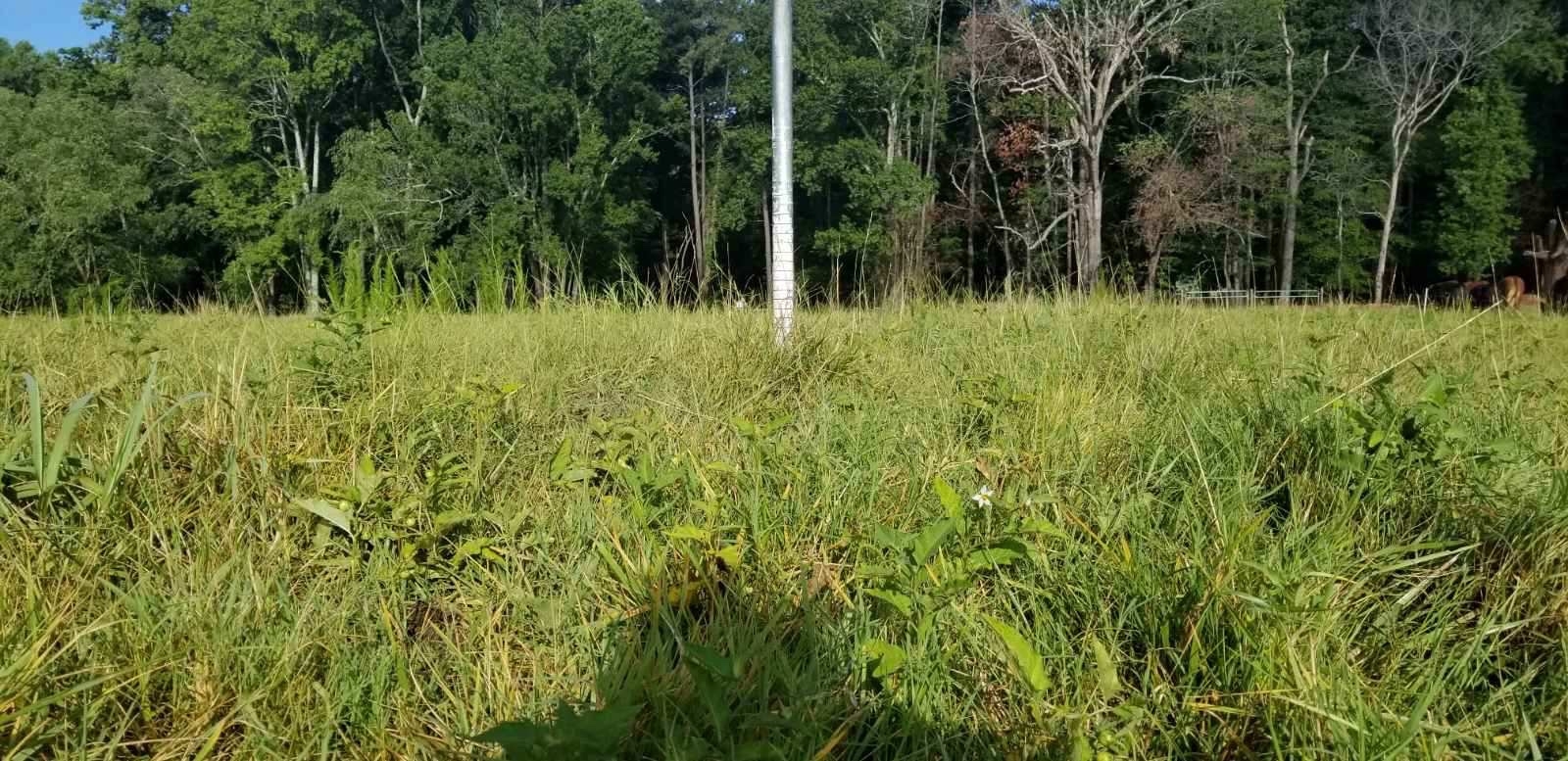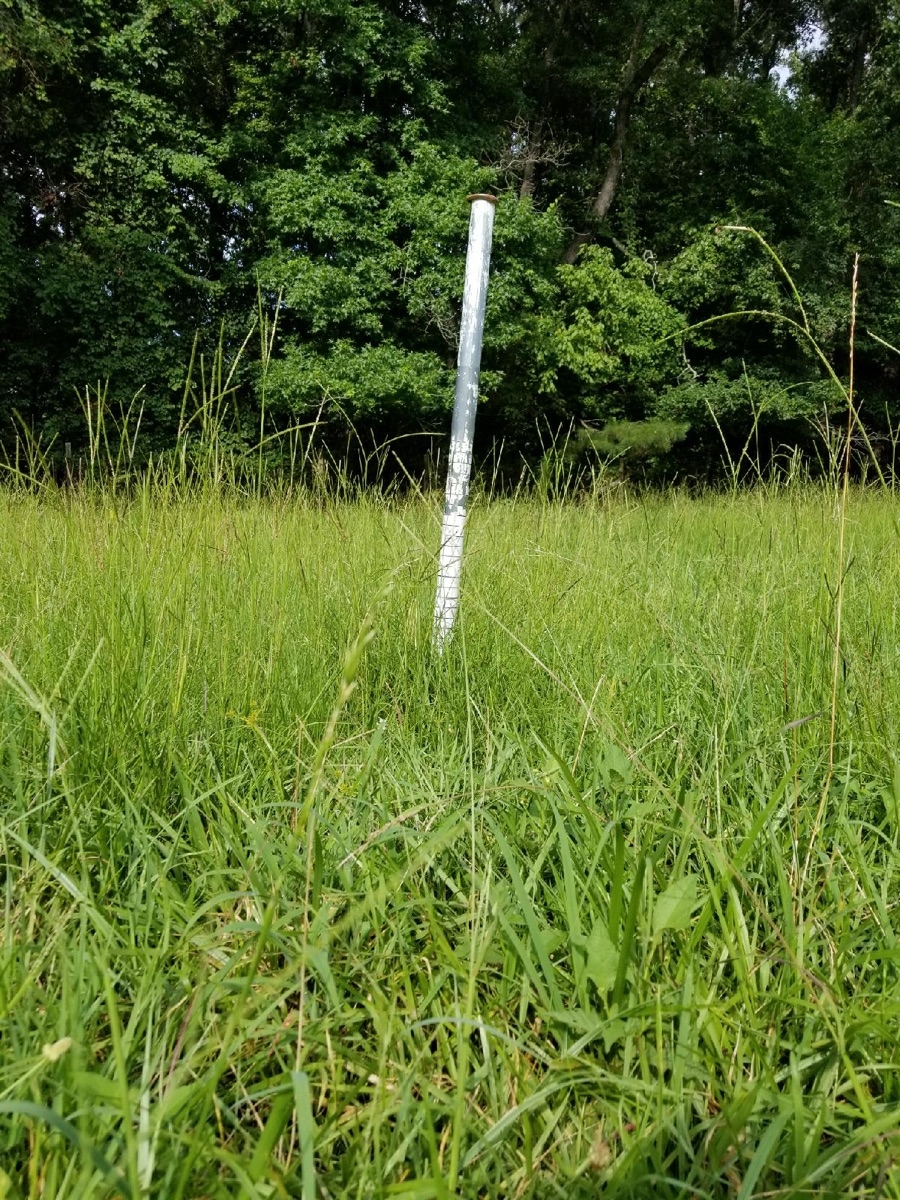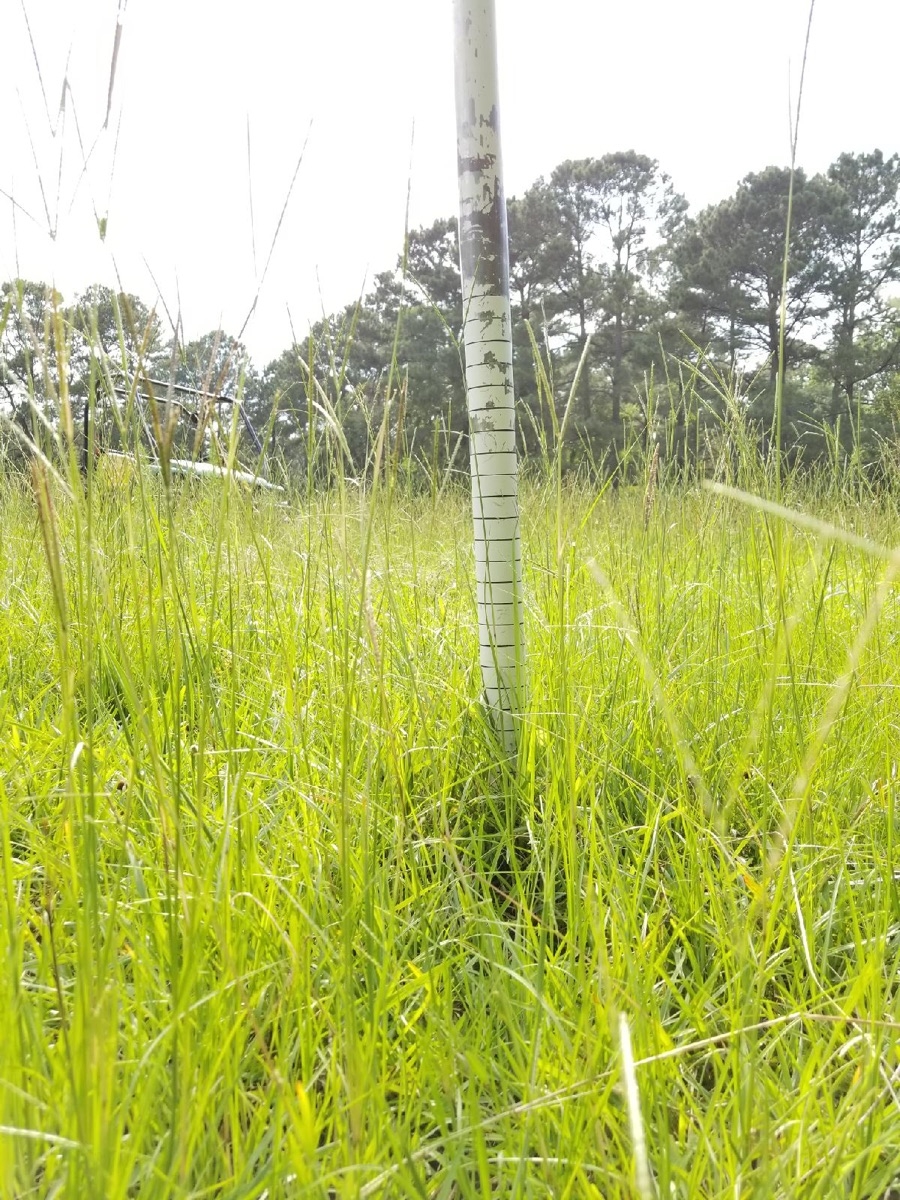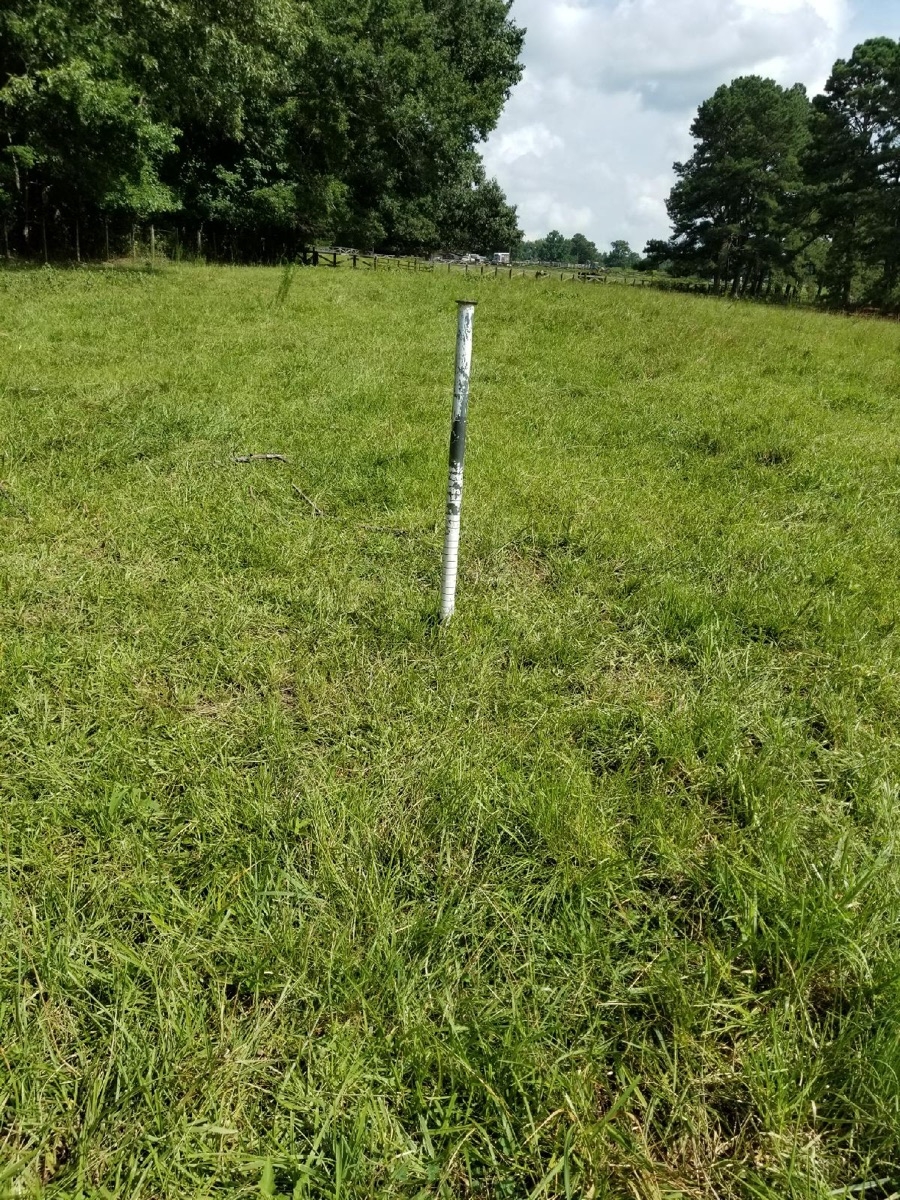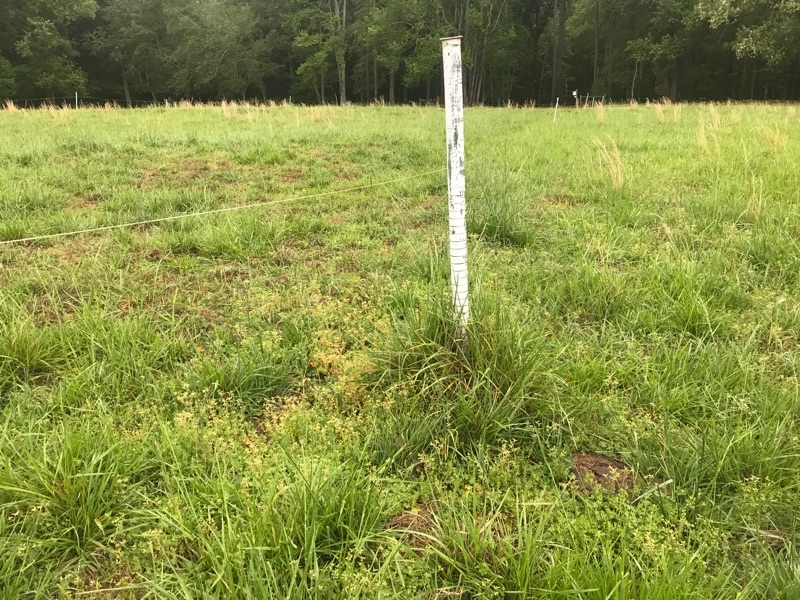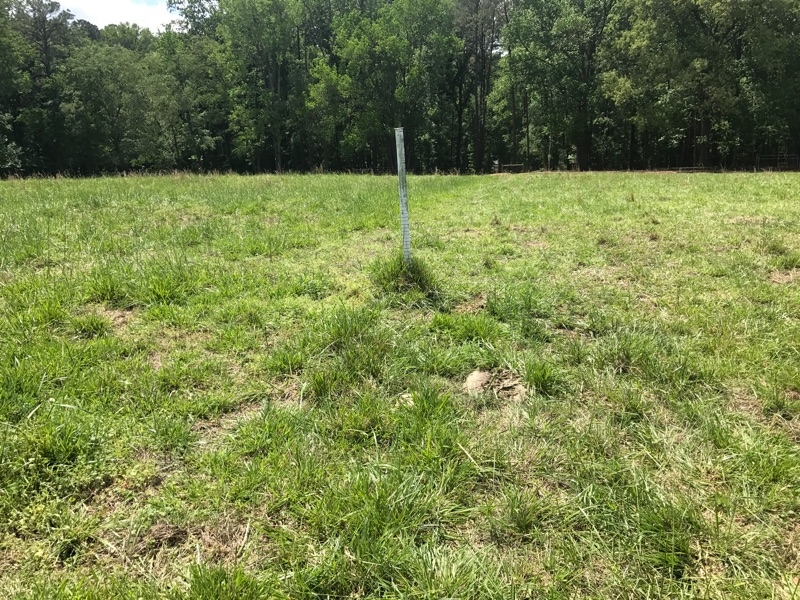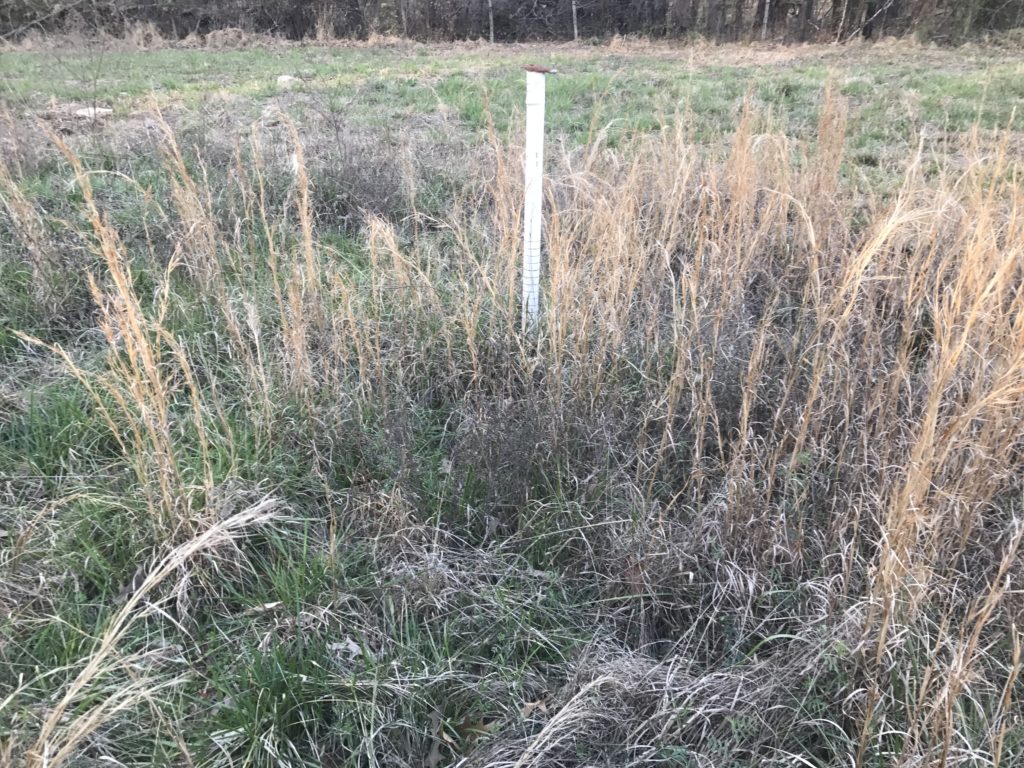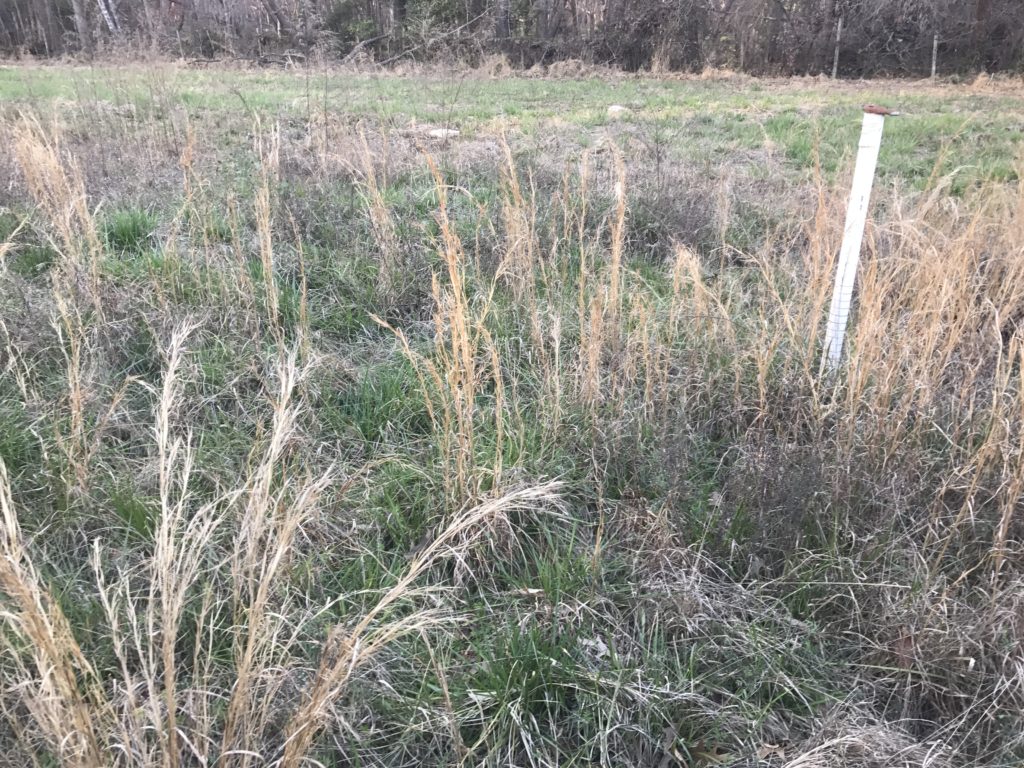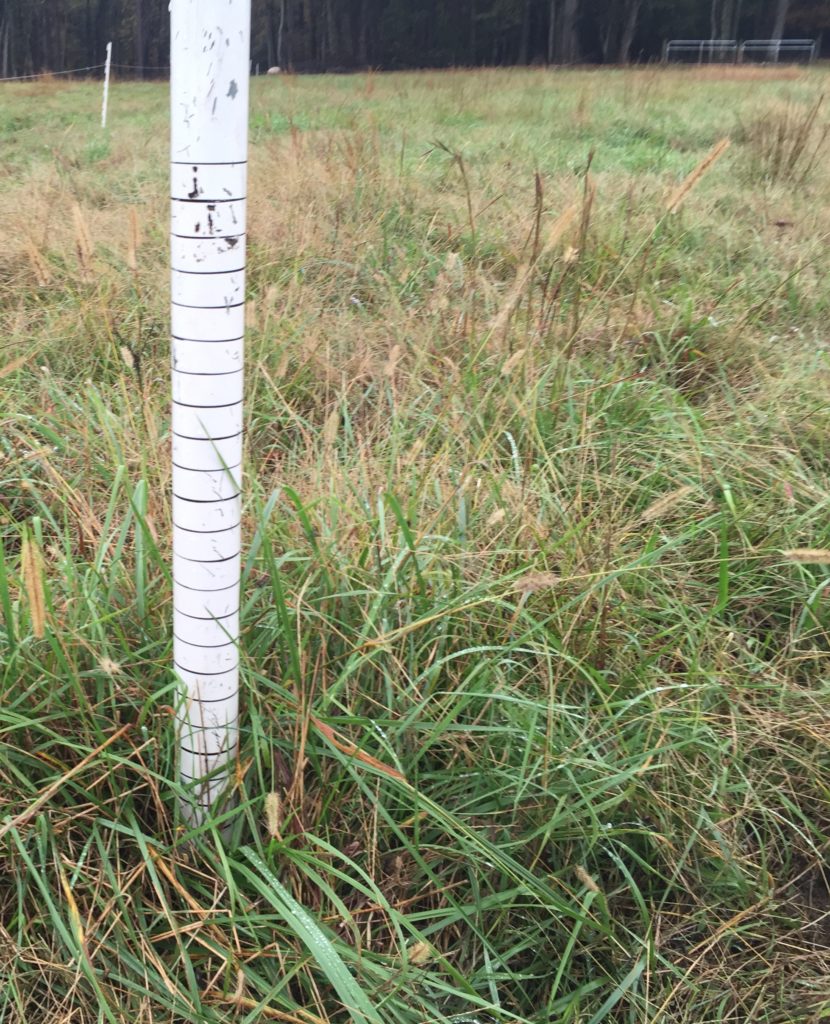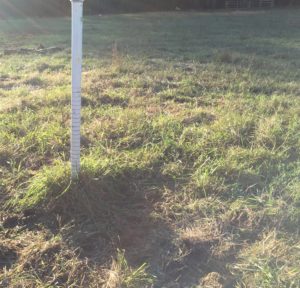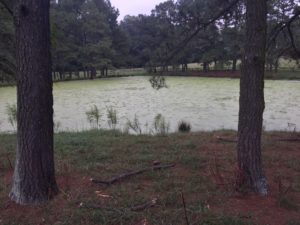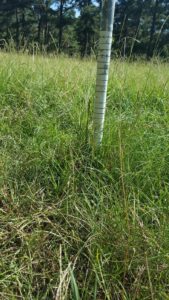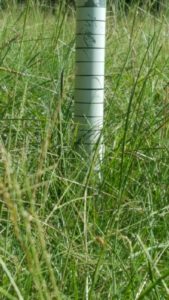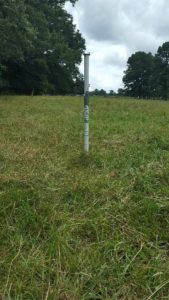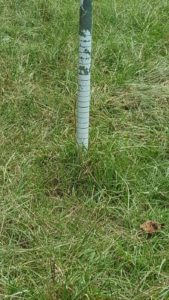This is our last post on the NRCS program for our second field, the field by the ponds. This field is located in a little corner formed between the lower pond, the trees between Old Stage Road/our driveway, and the pasture in front of my house. 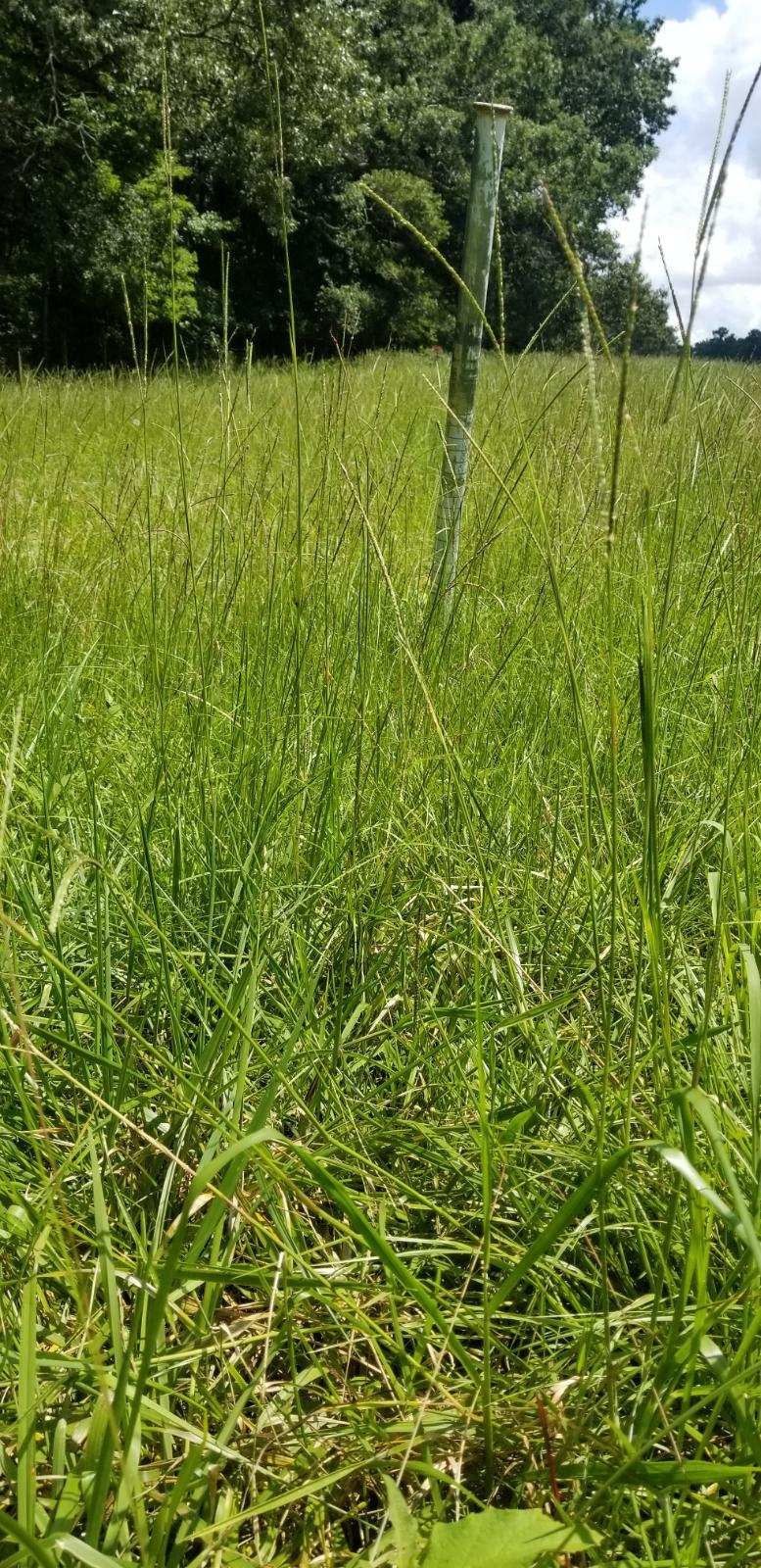
With the weather this year, grass has simply not been a problem. Lots of rain, relatively cool days (for NC) and not that much pressure from our finishing herd means that we have more than enough grass. In fact we’ve been grazing more than one day on a paddock just to get enough of the grass eaten. 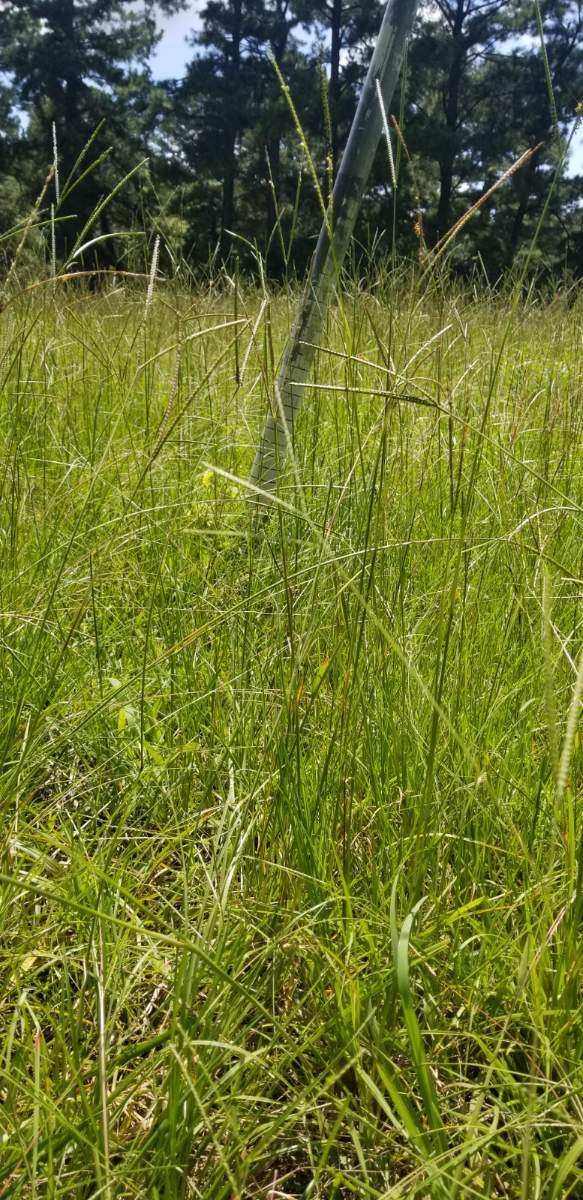
Here you can see the grass, full and tall. It runs about 14″ tall and we have 100% ground coverage. This has been about as good as it gets for a grazing season. 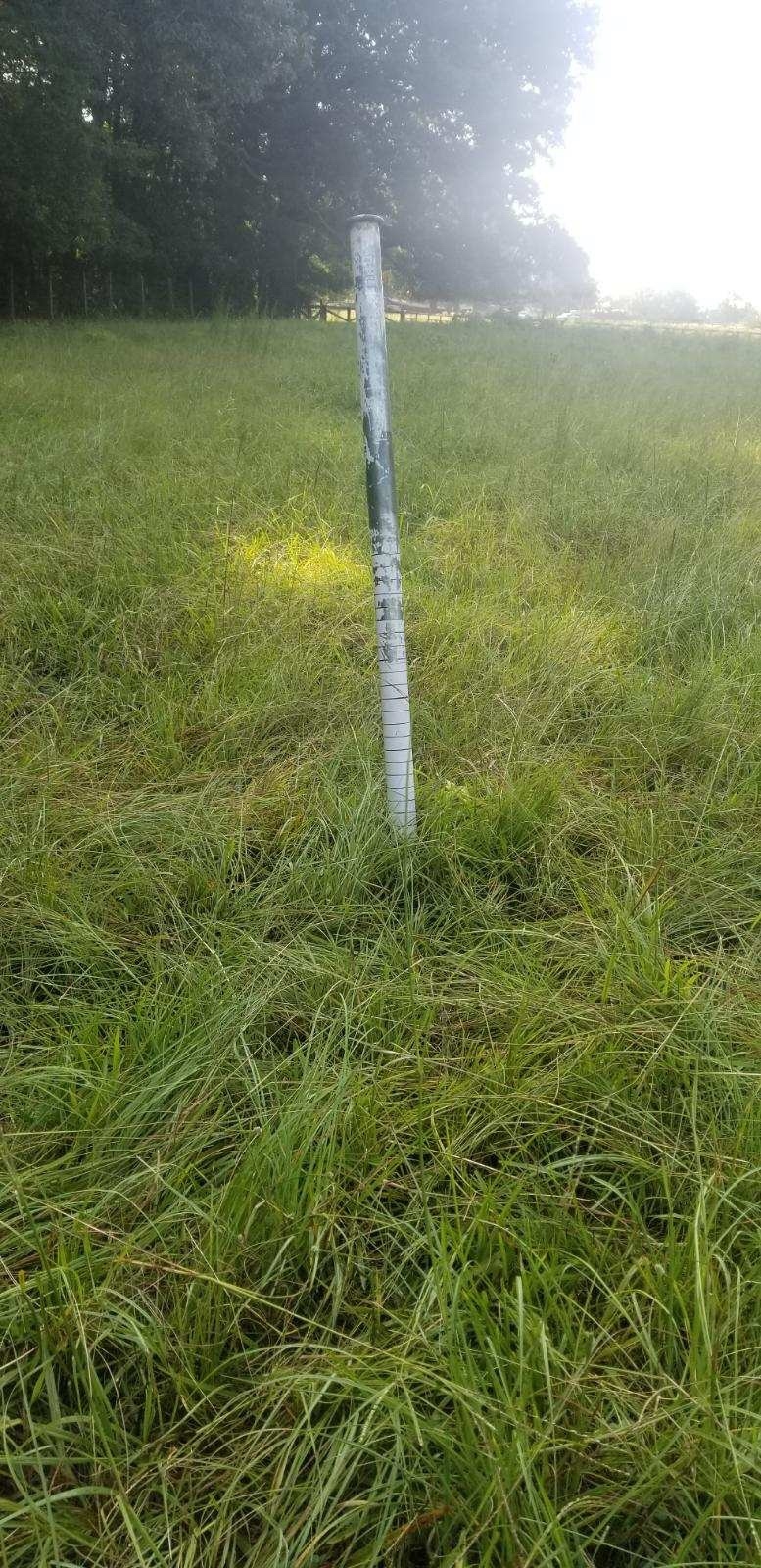
Post grazing, after several days of grazing, there is still a lot of grass left. But more importantly there is a lot of grass that has been trampled and left in contact with the ground. This is topsoil we’ll be building the rest of the season. 
Even after several days, the grass is still 6-8″ tall and we still have 100% ground coverage. This field can recover almost instantly and begin growing new grass for the next rotation, which will likely include the brood herd as they come home from summer grazing.
